
© Max Lee. ImageRain of Light / Yuan Architects
空气质量对于室内空间的影响
How Designing for Air Quality May Determine the Outcome of Your Meeting
由专筑网李韧,王雪纯编译
人类在不进食的情况下可以存活30天,在不喝的情况下存活3天,但是如果不呼吸,人们只能存活3分钟。人们对于空气的需求随着室内外而变化,然而事实上空气质量总是比人们想象地差一些。难闻的气味会让人们感受到空气质量不佳,但是一些无刺激气味的有害气体则不那么容易察觉。气体是明显的信号,让人们的大脑与神经中枢能够有意识地判断所处的环境的优劣。
因此,我们可以多了解一下低质量空气的来源,因为空气这在建筑环境中十分重要,同时我们也可以多了解该如何通过设计的方式提升空气质量。
诸如油漆、地毯、地板、家具、饰面、化合物、喷雾等等现代产品都会释放出不同气味的气体,它们对于人们的健康或多或少都有一些影响,其中不仅会影响人们的注意力,还可能触发呼吸系统疾病甚至癌症。但是有一些无气味的化学元素,以及房间的舒适度,也能够影响到人们的健康与舒适状况,触发诸如头疼、亚健康、过敏等不同反应。
我们从城市新闻中了解到了空气质量的重要性,而室内的空气质量则更不必说。可惜通常情况下室内空气状况并不佳,而且会在人们无意识的情况下对人们的健康造成影响。因此设计师需要在设计时就考虑到这些因素,同时尽量减少空气状况对于人们的负面影响。
Humans can survive for 30 days without eating, 3 days without drinking, yet only 3 minutes without breathing. Of course our need for air is also constant, we rely on it at all times indoors and outdoors although can often be less clean than we would hope. Unpleasant odors make us aware of bad air, but many irritants and unhealthy gases are not easily detectable by smell while still affecting our health. Smells are the most obvious signal, as they are consciously perceived by the brain and nervous system, allowing us to make judgements about our environment.
Learn more about where poor indoor air quality comes from, why it's important to address within the built environment, and how to design for good indoor air quality and comfort.
Gases let off by compounds in a wide variety of modern products (paints, carpeting, flooring, furniture finishes, cosmetics, sprays, etc) have been shown to have a wide variety of detrimental effects on health - from interrupted attention and cognition to significant long-term health effects that include respiratory disorders and cancers. Sometimes, however, chemical and biological pollutants and other odor-free elements, even the stuffiness of a room, affect our health and comfort and cause headaches, fatigue, allergies, and other detrimental reactions.
While we’ve become well aware of the importance of outdoor air quality via news about smog-filled cities, we take for granted the air quality of indoor environments (particularly in buildings that make use of air conditioning). Unfortunately, very often indoor air is not clean either and can be doing us harm without our knowledge. Designers, however, are uniquely positioned to guarantee the quality of these working environments and eliminate that threat. Here’s what you need to know:
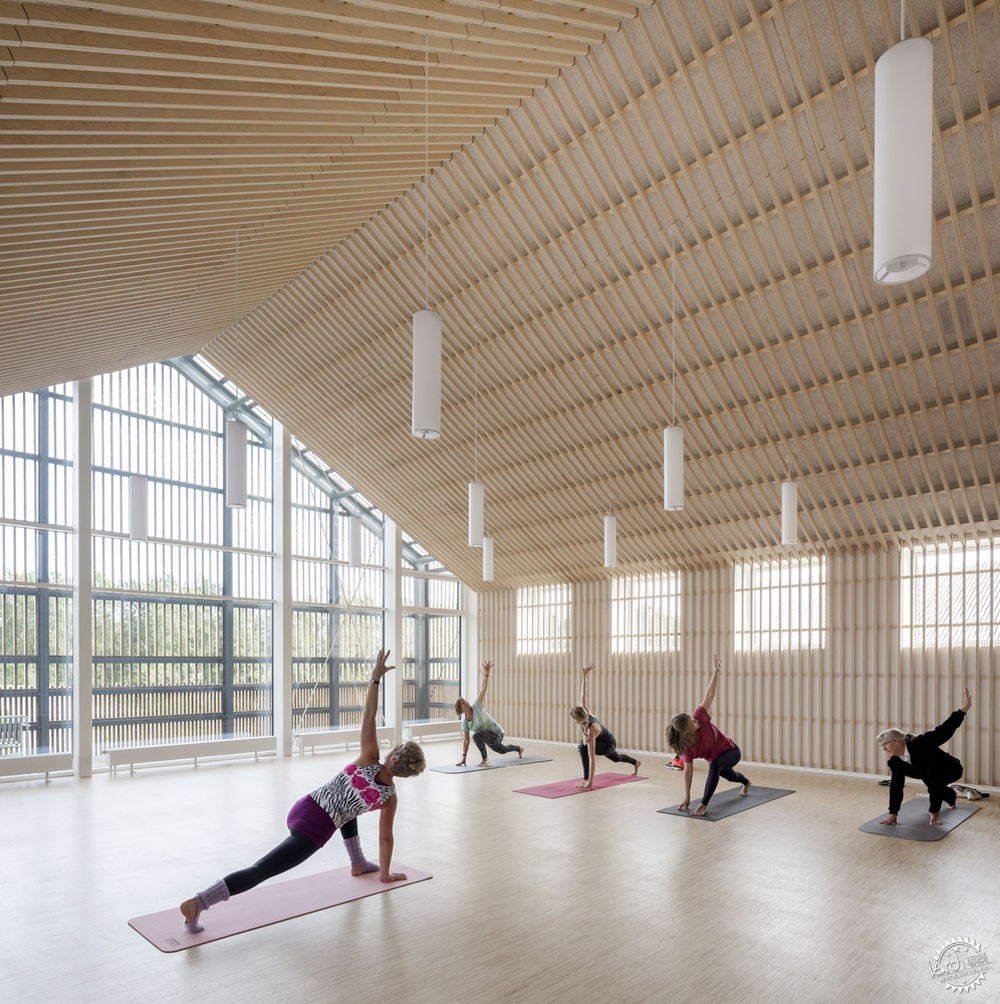
© Adam Mørk. ImageC.F. Møller Architects
室内空气质量(IAQ)包含有各种元素,其中有温度、湿度、污染物浓度等等。总的来说,IAQ指的是舒适、健康的建筑环境。虽然污染物能够经过测量而明确,但是这同样也是IAQ不可或缺的一部分。诸如年龄、性别、国籍、文化等元素能够影响人们对于空气质量的感知程度。一般来说,人们对于空气的感知主要通过气味。但是,即使是没有气味的恶劣空气也能够对长期居住于此的人们造成负面影响。
空气质量在不同场所的影响
建筑的功能能够决定室内空气质量的标准度。距离来说,医院的使用者免疫程度普遍较弱,因此空气的质量对于其来说则影响更为显著。医院中的不利空气的流通会导致疾病的传播,甚至影响到健康的人群,降低此类人群的免疫力和工作效率。另外,自然通风与采光也能够有效地改善患者的健康状况。[1, 2]
Indoor Air Quality, or IAQ, encompasses a variety of factors, including temperature, humidity, and concentration of pollutants. Generally, however, IAQ refers to the comfort, health, and well-being of building occupants. Accordingly, while pollutants and particles can be objectively measured, there is also a subjective component to IAQ. Factors such as age, gender, and even nationality and culture can affect the way an individual perceives air quality. The method of human perception of air quality is primarily through odors, as other types of sensory irritation require significantly more pollution to produce noticeable effects while still impacting health. However, even when not consciously recognized, poor air quality can have adverse effects on building occupants in the short- and long-term.
Why does it matter?
A building’s function, as well as its typical occupancy, can determine both the acceptable standards for indoor air quality and its possible consequences. For example, hospitals and schools both contain vulnerable populations and therefore the effects of poor air quality can be even more detrimental. Unacceptable air quality in a hospital can lead to patient infections and the spread of illnesses and affect the healthcare workers as well, decreasing their productivity and ability to provide effective care. Natural ventilation and daylight have also been shown to decrease recovery times and improve patients’ mental health [1, 2].

© Vivek Muthuramalingam. ImageBiome Environmental Solutions
同样地,在学校,较差的空气质量会影响老师和学生,对于学生来说,可能会引起呼吸道疾病、注意力难以集中、学习成绩下滑等不良状况,而且由于学生们还处在生长发育的阶段,其免疫力也更容易受到污染物的影响。另外,学校的老师与员工也会由于空气质量的因素而造成教学质量下降的后果。
Similarly, in a school setting, poor IAQ can affect the students and staff. In students, poor air quality has been linked to greater absenteeism, aggravation of asthma and other respiratory illnesses, and decreased attention and productivity due to discomfort. Children are also likely to be more susceptible to environmental pollutants as their developing bodies breathe more air in proportion to their body size than adults. School staff, however, also feels the effects of poor air quality, leading to missed work days and possibly decreased teaching performance [3].

© Adam Mørk. ImageC.F. Møller Architects
在家里或是办公室,污染的影响一般不易被察觉,这是由于特定的空间环境。在办公室,人们对于室内环境的把控力不高,因此不良的空气质量会导致工作效率、注意力的下降,办公室的不良通风会让员工们感到疲惫,这会影响到办公成果[4]。而在家里,如果环境闷热,则会影响睡眠质量,同时造成呼吸系统等疾病。
In a home or office, the influence of pollutants can be equally difficult to detect, as any symptoms can be challenging to identify and ascribe to a specific cause. Decreased focus and productivity are noted in office settings, where people also generally have less control over their indoor environment than they do in the home. High CO2 levels in an office building or poorly-ventilated meeting room can make workers feel tired and foggy, which can affect decision-making capabilities [4]. If air quality in a home leads to stuffiness or other discomforts, it can affect sleep quality, as well as cause respiratory symptoms and headaches.

Courtesy of Andrea Vasquez
如何评估空气质量?
室内空气污染源可以分为四个类别。“室外污染源”包括交通与工业污染,“居住活动与产品污染源”则包含来源于做饭、吸烟、清洁、个人护理、打印油墨等生活行为。另外两个类别与建筑相关,分别是“建筑材料与饰面”和“通风系统组件”。前者包含诸如胶合面板、油漆、家具、地面、墙面等建筑元素,后者则包含过滤设施、管道、加湿器等设施。
这些污染源会释放一定的颗粒固体与气体,而这些固体与气体则来源于这些物品的使用。通风率、风速、温度、湿度、空间活动、污染源使用频率、使用时间等等都会影响空气质量。
How do you measure it?
The sources of indoor air pollution can be classified into four categories. The ‘outdoor sources’ category includes traffic and industrial pollution. ‘Occupant-related activities and products’ encompasses pollution generated from things like cooking, tobacco smoke, cleaning products, personal care, and printers. The two building-related categories are ‘building materials and furnishings’ and ‘ventilation system components’. ‘Building materials and furnishings’ includes pollution from elements like plywood, paint, furniture, and floor or wall coverings, while ‘ventilation system components’ refers to filters, ducts, and humidifiers.
These sources can emit particles and/or gases that are intrinsic to the product itself, that are caused by the product coming into contact with other products, or that arise during use of the product. Such factors as the ventilation rate, air velocity, temperature, relative humidity, activities occurring in the space, and the frequency and duration of exposure to the pollutants influence the effects of these pollutants and the resultant perception of the indoor air quality.

© Ishita Sitwala. ImageDesign Work Group
如果要评估室内空气质量,那么需要考虑以下元素,即通风程度、空气污染物、气味、颗粒数量。室内的通风程度则通过室内二氧化碳水平来评估,而挥发性有机化合物(VOC)主要用于评估污染程度。具体来说,室外空气的二氧化碳正常浓度为250至350ppm,通风状况一般的情况下,二氧化碳浓度为350至1000ppm。如果浓度超过1000ppm,那么人们就会开始感觉到闷,如果浓度达到2000至5000ppm,人们就会感觉透不过气,甚至出现头疼、嗜睡、注意力不集中的状况。因此在大部分地区,8个小时工作场所的二氧化碳浓度最多为5000ppm,另外,由于家用产品具有一定化学挥发性,因此室内的有机化合物浓度为室外的2至5倍。
To assess a building’s indoor air quality, considerations include the level of stuffiness, amount of gaseous pollutants and odors, and amount of particulate matter. The stuffiness of air is generally determined by measuring the level of CO2, while volatile organic compounds (VOCs) are measured to evaluate the level of pollutants. For example, the normal concentration of CO2 in outdoor air is between 250-350 ppm (parts per million), where a typical indoor space with a good air exchange ranges from 350-1,000 ppm. At upwards of 1,000 ppm, inhabitants may start to complain of drowsiness and poor air. When levels reach 2,000-5,000 ppm, the air feels noticeably stale, stagnant, and stuffy and can cause headaches, sleepiness, poor concentration, loss of attention, and even increased heart rate and slight nausea. The workplace exposure limit in most jurisdictions is 5,000 ppm for an 8 hour period. Also, VOC levels are commonly 2-5 times greater indoors than outdoors due to the many household products that release these chemicals.
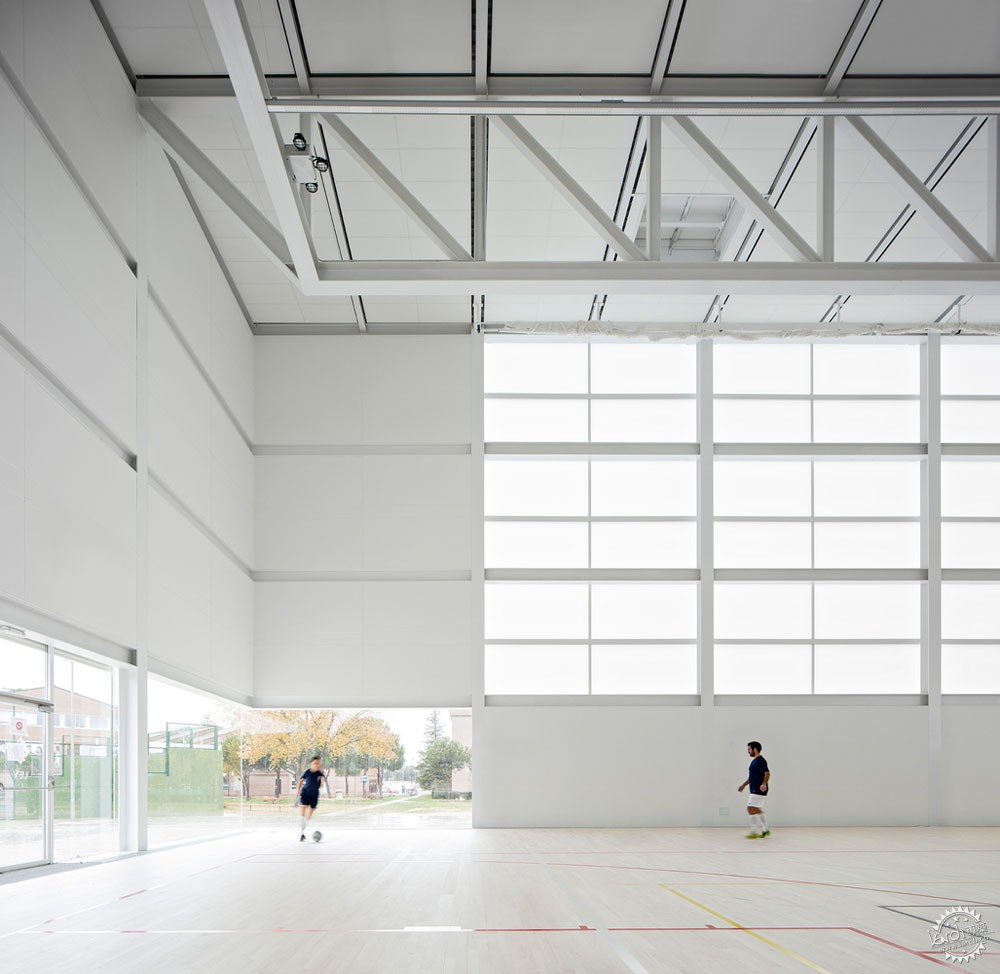
© Javier Callejas. ImageAlberto Campo Baeza
空气中的颗粒评估包括“可吸入悬浮颗粒”和“细微颗粒”,这两种颗粒有着不同的半径,同时对于健康的影响也各不相同。直径小于10微米即为大型颗粒,每立方米的浓度达到20微米时便很危险。小于2.5微米的颗粒不得超过每立方米10微米,这种评估指标一般应用在大型城市之中。由颗粒组成的雾霾或烟雾就是空气质量较差的证据。在室内,最为明显的决定空气质量的因素是气味。但是气味的评估会更加主观一些,因为这不仅涉及到气味的浓度,还涉及到气味给人带来的感受。
如何通过设计来提升室内空气质量?
在恶劣的气候中,一般的做法是保证建筑尽量不受外界空气的影响。但是建筑的隔热性与气密性会将污染物保留在建筑内部,从而影响到空气质量,那么这时候就彰显了通风系统的重要作用。通风系统结合自然与机械通风,具有一定的换气频率,为室内更换干净的空气。
Measuring the amount of particles in the air includes both “respirable suspended particles” and “fine particles,” which refer to two different sizes of particulates and the respective levels at which they cause discomfort and health implications. The larger particles (smaller than 10 micrometers) are dangerous at a level of 20 micrometers per cubic meter. Particles under 2.5 micrometers should not exceed 10 micrometers per cubic meter and are used to determine the air quality indexes commonly seen in large cities. Haze and smog are caused primarily by these smaller particles and are visual evidence of poor air quality in the outside air. Indoors, the most readily noticeable determinant of air quality is the odor. Assessing odors, however, is somewhat more subjective than the other measurements as it involves analysis of not only their concentration and intensity, but also their hedonic assessment (whether the odors are considered pleasant or unpleasant).
How to design for good Indoor Air Quality:
In harsher climates, often the approach is to make the building as impervious to the outdoors as possible. But the insulation and air-tightness can trap pollutants inside the building and lead to poor IAQ, which increases the importance of a good ventilation system. Ventilation systems can utilize natural ventilation, mechanical ventilation, or a hybrid of both. The key features of a ventilation system, as it relates to air quality, are sufficiently high air-change frequency and clean air supplied to the right places.

Courtesy of Andrea Vasquez
在机械通风系统之中,人们可以通过自动或是手动的方式来检测通风需求。自动通风系统可以通过设施来自动检测空气中的二氧化碳水平。而手动通风则可以增加人们的舒适性。机械通风系统还存在着后期维护问题,因为即使是最好的通风设施,也需要后期的好好维护,例如空气过滤器的及时更换。
In a mechanical ventilation system, either automatic or manual detectors may be utilized to determine when ventilation is needed in a space. Automated systems can be set to a timer or programmed to detect pollutants levels, such as CO2, and are the most efficient option. However, manual control can increase the occupants’ perception of comfort. Another important human factor in mechanical systems is maintenance and upkeep. Even the best-designed (and built) ventilation system will not function as intended if not regularly maintained, for example if the air filters are not regularly changed.
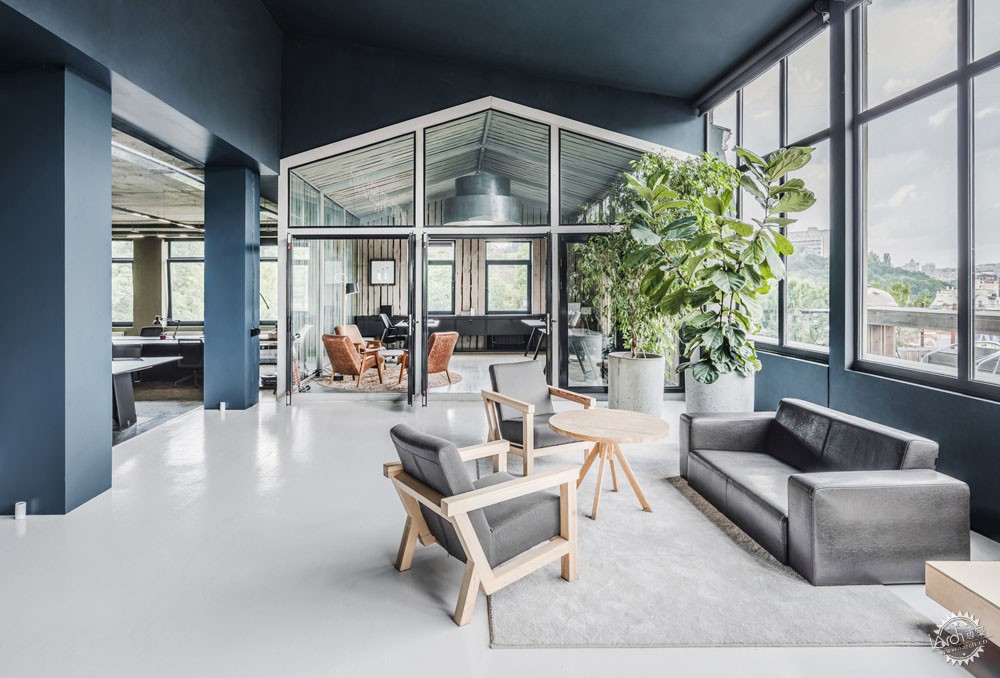
© Yevhenii Avramenko. ImageHey Banda / balbek bureau
另外还可以进行自然通风,这相比起机械通风,则省了不少设备与管道的费用,同时也减少了运行成本。人们与自然的接触能够促进心理健康,但是,自然通风不易控制。不同的场地、气候、建筑类型也对自然通风有着一定的限制,例如室外空气、噪音污染、极端温度差异等等。
Another option is natural ventilation, which eliminates costly mechanical equipment and ductwork from a project while also providing lower running costs. Building inhabitants enjoy the psychological benefits of contact with nature. By nature, however, natural ventilation is not controlled and therefore may not always be sufficient. Many locations, climates, and building types also create additional challenges to relying entirely on natural ventilation, primarily due to outdoor air and noise pollution and extreme indoor/outdoor temperature differences.
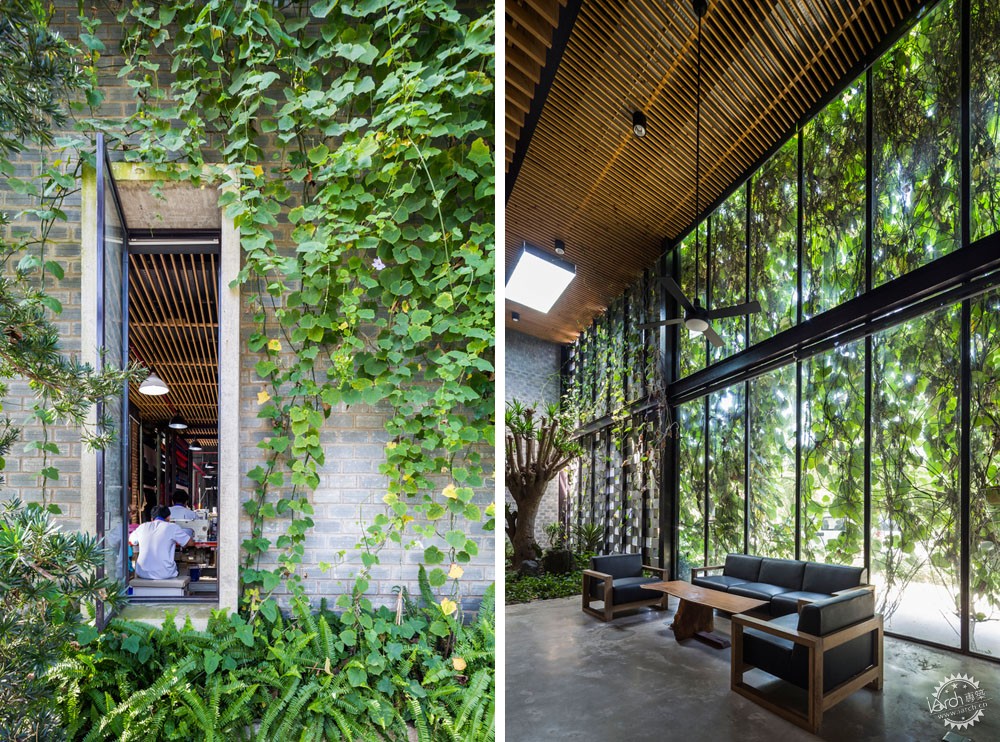
© Hiroyuki Oki. ImageHo Khue Architects
因此,许多通风体系结合使用了自然通风与机械通风。在现代,许多可持续建筑项目都传达了对空气质量的重视,并且这也是许多规范的规定。例如英国BREEAM体系的健康类项目,就需要减少空气的污染源,并且保持良好的通风。美国绿色建筑委员会的LEED项目则明确规定了设计优良的空气质量。WELL建筑标准则对于室内空气质量则采用了更为全面的策略,在其中,“空气”成为了7个核心概念之一,并且有着一系列的验证特征,其中包括禁烟、清洁、湿度保障等等。
Many systems today incorporate both natural and mechanical ventilation aspects and are therefore considered hybrid systems. Today’s sustainability certification programs recognize the importance of IAQ and fresh air and have incorporated it into their specifications. Under UK program BREEAM, within the category of Health and Wellbeing, credits are available for minimizing sources of air pollution as well as providing potential for natural ventilation. The U.S. Green Building Council’s LEED program also awards points for designing for good air quality, but not specifically for natural ventilation. The WELL Building Standard takes a more holistic approach to indoor air quality, with “Air” as one of its seven core concepts and dozens of “features” that can be verified, from a smoking ban to cleaning protocol and humidity control.

Courtesy of Andrea Vasquez
那么,这就表示建筑师与设计师需要通过设计的策略来保证良好健康的空气。室内空气质量的改善的最佳方式便是减少污染源,提升自然通风。因此建筑师与设计师需要结合考虑使用无污染材料与家具,减少挥发性有机化合物的使用。
Systems like these hint at the directions that architects and designers can take to provide buildings with healthy air. The encompassing strategy and best practice to improve indoor air quality is to reduce pollution at its source while also improving ventilation and purifying the air. A solid starting point is to carefully specify non-polluting materials and equipment to eliminate VOCs as much as possible, yet various mitigating factors can make this impractical or even unfeasible.

© Fernando Alda. ImageHarald Schönegger + Inmaculada González
接下来便是通风,需要保证一定的通风次数,保障室内空气的流通,但是这也受到了室内人员活动的影响。另外,进入建筑的空气应该经过净化,将颗粒进行过滤,因此人们也应当注意到这些细节,因为一些通风设施如果不进行定期维护,那么它们自身也可能成为污染源。
另外,就是将植物与建筑设计相结合,例如绿植墙体与室内种植。植物能够有效地吸收二氧化碳,过滤一些有害气体,而且人们与植物的接触能够提升心理健康。但是,只依赖于植物也无法完全改善空气质量,因此人们还可以结合一些空气净化产品,来吸收室内空气中的甲醛等有害物质。
The next step, then, is ventilation and ensuring an adequate number of air changes per hour are provided to accommodate the volume of space. The number of air changes will be affected by factors like occupancy and activity in the space. As this air comes into the building, it should be purified, filtering out particulate matter. This is the time at which human attention becomes especially important, as if these filters are not maintained often, they can themselves become a source of pollution.
Another strategy is to incorporate plants into a building design, such as through a green wall or indoor planting area. Plants not only filter carbon dioxide and possibly some harmful chemicals out of the air, but the principles of biophilia posit that for humans to be in contact with nature increases mental and physical well-being. Plants alone, however, cannot solve a building’s air quality problems. Air purifying building products, like those in Activ’Air family, can also improve IAQ by absorbing formaldehyde from the air.

© Christopher Frederick Jones. ImageBrisbane Studio / Cox Architecture
空气污染是当今健康的重要影响因素,尤其是在发展中国家,每年大约有700万人因此而死亡。全新的建筑都能够通过设计的方式而拥有良好的空气质量,而许多老建筑则也应该通过后期的改造来提升空气环境。人们生活的大部分时间都在室内,因此应该多关注这些部分,不要让健康为恶劣的空气所影响。
Air pollution is today’s most prevalent environmental killer, especially in developing countries, with approximately 7 million deaths annually worldwide. New construction has the opportunity to design for good indoor air quality, but many older buildings, or simply those built without concern for IAQ, would also benefit immensely from retrofitting to improve the indoor environment. We spend the majority of our time indoors, making it worth the effort and investment to ensure the very air we breathe is not causing us harm.
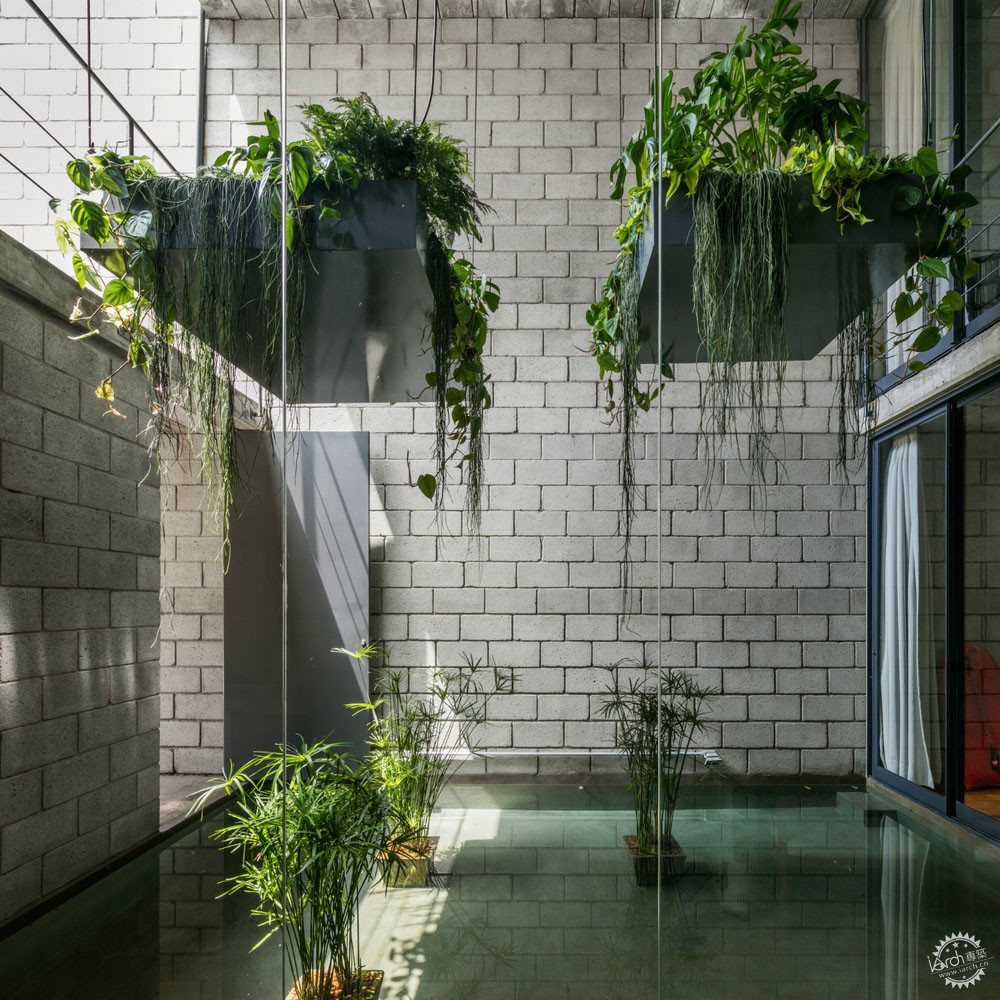
© Nelson Kon. ImageMipibu House / Terra e Tuma Arquitetos Associados. Image
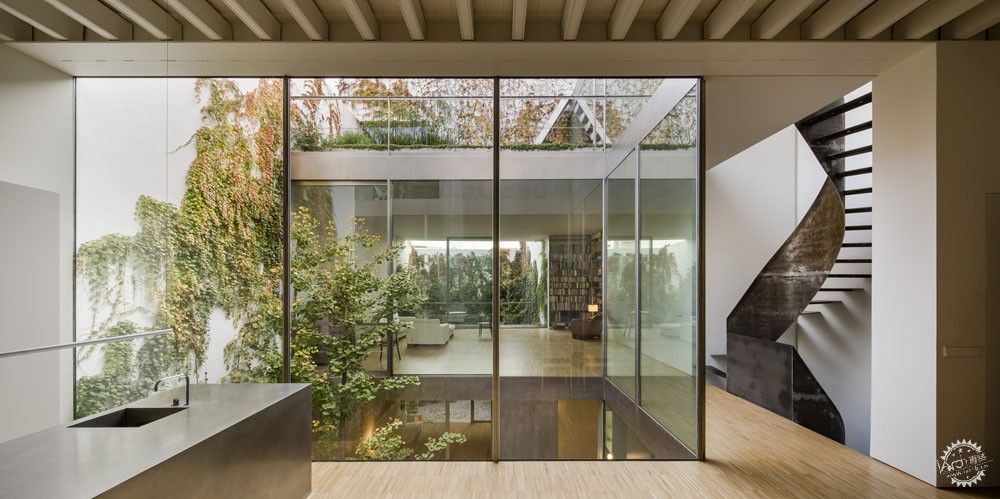
© Fernando Alda. ImageHarald Schönegger + Inmaculada González
References:
[1]https://www.payette.com/research-innovation/exploring-natural-ventilation-in-the-healthcare-setting/
[2] https://www.healthdesign.org/chd/research/impact-light-outcomes-healthcare-settings
[3] https://www.epa.gov/iaq-schools
https://www.architectmagazine.com/technology/architecture-and-the-airpocalypse_o
[4] Satish U, Mendell MJ, Shekhar K, Hotchi T, Sullivan D, Streufert S, Fisk WJ. Is CO2 an indoor pollutant? Direct effects of low-to-moderate CO2 concentrations on human decision-making performance. Environmental Health Perspectives, 2012, 120(12): 1671-1677
https://www.designingbuildings.co.uk/wiki/Air_quality_in_the_built_environment
https://www.designingbuildings.co.uk/wiki/Volatile_organic_compounds_VOC
https://www.ncbi.nlm.nih.gov/pubmed/16948709
https://www.thebesa.com/indoor-air-quality/?platform=hootsuite
https://www.epa.gov/indoor-air-quality-iaq/introduction-indoor-air-quality
https://ac.els-cdn.com/S1877705811048193/1-s2.0-S1877705811048193-main.pdf?_tid=2a05d5fa-bb0c-4214-a3ea-3749a8eedacd&acdnat=1551231424_3ecb68615e3a3b13f075cf848a8a0efc
https://pdfs.semanticscholar.org/a669/e30eee7d83cc2d203ca9bbfa12b3c65e7ff4.pdf
https://www.breeam.com/BREEAMUK2014SchemeDocument/content/05_health/hea02.htm
https://www.usgbc.org/credits/new-construction-commercial-interiors-core-and-shell-schools-new-construction-retail-new-c-8
https://standard.wellcertified.com/air?_ga=2.243972805.1755569716.1551232649-1499642030.1551232649
https://www.nachi.org/plants-indoor-air-quality.htm
https://www.epa.gov/pm-pollution/health-and-environmental-effects-particulate-matter-pm
|
|
